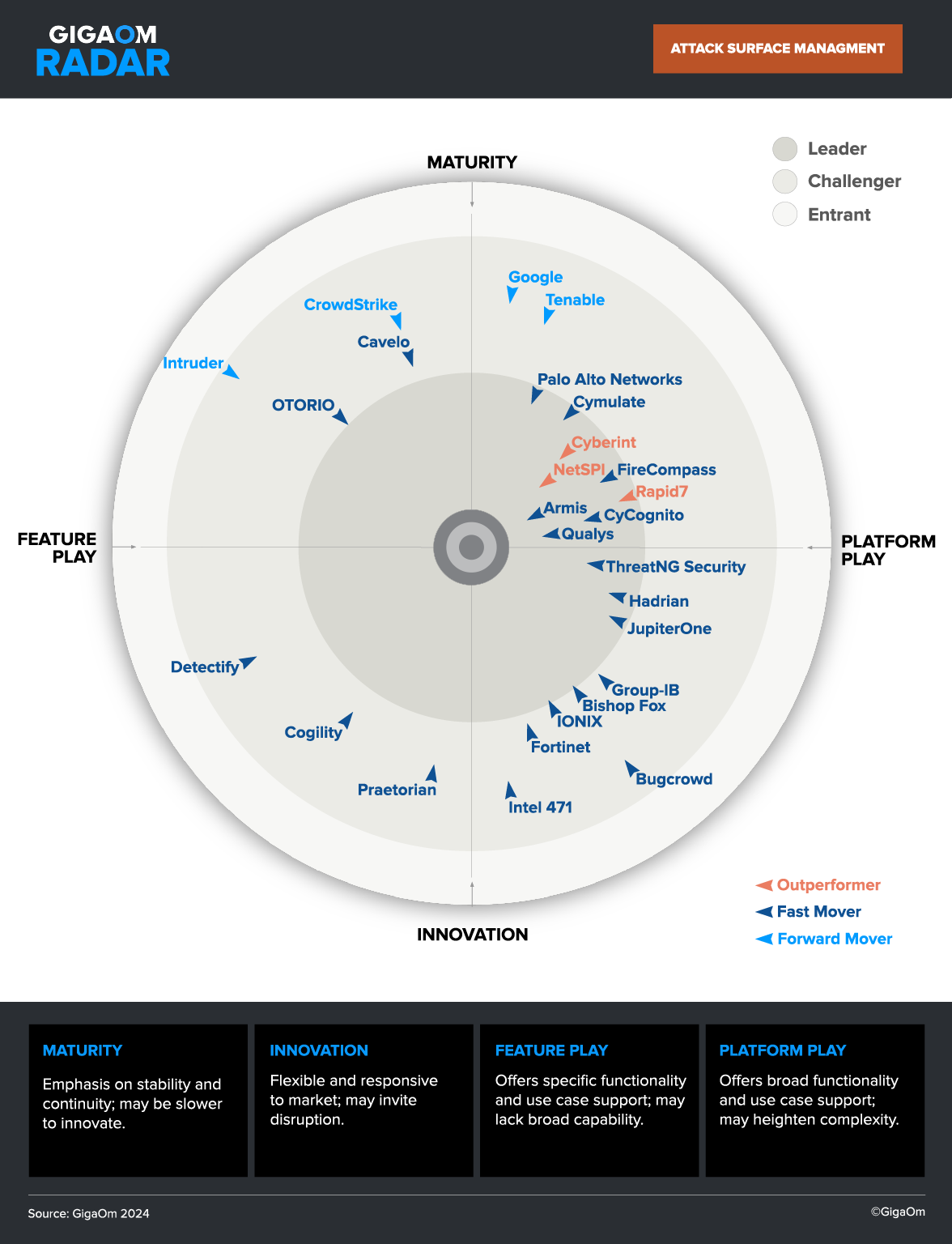What Is Attack Surface Mapping?
Attack surface mapping is the process of identifying and cataloging all the potential points where a threat actor could access a system or attack it. This includes examining hardware, software, network interfaces, and user interactions that could be exploited. The goal is to understand and minimize the attack surface, thereby reducing the risk of security breaches.
Attack surface mapping involves several steps, including asset inventory, threat modeling, and vulnerability assessment. By creating a detailed map of all entry points, organizations can better prioritize security measures, allocate resources, and implement effective defenses. This proactive approach helps in detecting potential vulnerabilities before they can be exploited by attackers.
This is part of a series of articles about attack surface management.
Why Is Attack Surface Mapping Important?
Attack surface mapping is crucial because it provides a detailed understanding of where a system is most vulnerable to attacks. This knowledge allows organizations to:
- Identify weaknesses: Pinpoint specific areas that need fortification.
- Prioritize security efforts: Allocate resources and efforts to the most critical vulnerabilities.
- Improve incident response: Enhance the ability to detect, respond to, and recover from security incidents.
- Support compliance: Ensure adherence to regulatory requirements and industry standards.
- Reduce risk: Minimize the likelihood of successful attacks and data breaches.
Different Types Of Attack Surface
Digital vs. Physical
Digital attack surface: Includes all the hardware, software, and network interfaces connected to the internet or internal network. This encompasses servers, workstations, mobile devices, web applications, cloud services, and IoT devices. Vulnerabilities in this area can arise from unpatched software, weak passwords, misconfigured systems, or other security flaws.
Physical attack surface: The physical attack surface involves physical access to devices and infrastructure. This includes access points like office buildings, data centers, and hardware devices. Physical security measures, such as surveillance cameras, secure entry systems, and regular audits, are crucial in protecting against unauthorized physical access that could lead to data breaches or sabotage.
Internal vs. External
Internal attack surface: Internal attack surfaces are the vulnerabilities within an organization’s network that can be exploited by insiders or through lateral movement once an attacker has breached the perimeter. These can include employee workstations, applications, and intranet services. Securing the internal attack surface requires stringent access controls, regular security training for employees, and monitoring for suspicious activities within the network.
External attack surface: The external attack surface consists of all vulnerabilities exposed to the outside world. This includes public-facing web applications, email servers, DNS servers, other systems accessible over the internet, and even internal systems that are inadvertently exposed, like business intelligence software or administrative consoles. Ensuring the security of the external attack surface involves regular vulnerability scanning, robust firewall configurations, and applying security patches promptly.
Web vs. Social Platforms
Web attack surface: This refers to the potential vulnerabilities present in web applications and websites. Common issues include SQL injection, cross-site scripting (XSS), and unsecured API endpoints. Securing the web attack surface requires thorough testing, secure coding practices, and regular updates to web application firewalls (WAFs).
Social media attack surface: The social media attack surface includes all the vulnerabilities related to an organization’s presence on social platforms. This can include unauthorized access to social media accounts, phishing attacks, and social engineering. Protecting this attack surface involves monitoring for fraudulent activities, educating employees on security best practices, and using multi-factor authentication (MFA) to secure social media accounts.
Tips from the Expert

Rob Gurzeev, CEO and Co-Founder of CyCognito, has led the development of offensive security solutions for both the private sector and intelligence agencies.
In my experience, here are tips that can help you better adapt to the topic of attack surfacemapping:
- Keep your asset inventory up to date: Deploy automated asset discovery tools to continuously identify and inventory all assets within your network, ensuring that nothing is overlooked and everything is accounted for in your attack surface map.
- Monitor your third-party integrations: Assess and monitor third-party applications and services that integrate with your systems. Ensure they follow your security standards to avoid introducing vulnerabilities through external partnerships.
- Ensure configurations are consistent: Regularly audit and enforce configuration management policies to ensure that systems are securely configured and any deviations are promptly corrected.
- Use red team exercises: Regularly schedule red team exercises where security professionals simulate real-world attacks to identify and exploit vulnerabilities. This helps in testing the effectiveness of your defenses.
- Build a rhythm for training and awareness: Regularly train and update your security team and employees on the latest attack vectors and defense mechanisms. Encourage a security-first mindset to enhance the overall security culture of your organization.

GigaOm Radar for Attack Surface Management 2025
Assess the value and progression of ASM solutions to help you select the best solution.
Access the GigaOm Radar for Attack Surface Management 2025 to get an overview of the available ASM solutions, identify leading offerings, and evaluate the best solution for you.

Top 7 Techniques for Attack Surface Mapping
Manual Techniques
The techniques below are often used as part of manual attack surface analysis. However, it’s important to note that they can also be run automatically as part of a continuous security monitoring strategy.
1. Network Analysis
Network analysis involves examining an organization’s network infrastructure to identify vulnerabilities and potential points of exploitation. This process includes scanning for open ports, identifying active services, and mapping the network topology.
Tools such as Wireshark, Nmap, and NetFlow analyzers are commonly used to capture and analyze network traffic, helping security professionals detect unusual patterns and potential security gaps. Network analysis also includes assessing the configuration of firewalls, routers, and switches to ensure they block unauthorized access while allowing legitimate traffic.
2. Exert OSINT Analysis
OSINT involves collecting and analyzing information from publicly accessible sources to identify potential security risks. This includes data from websites, social media platforms, forums, news articles, and other online publications.
Security experts use OSINT to discover sensitive information that may have been inadvertently exposed, such as employee credentials, network details, or internal documentation. By leveraging OSINT, security teams can gain insights into their digital footprint and address vulnerabilities that could be exploited by attackers.
3. Application Profiling
Application profiling involves a detailed analysis of software applications to understand their structure, functionality, and potential vulnerabilities. This technique includes examining the application’s code, architecture, and behavior under different conditions. Profiling helps in identifying insecure coding practices, unpatched vulnerabilities, and misconfigurations.
Application profiling requires specialized knowledge and tools to dissect the application layers, from front-end interfaces to back-end services, ensuring a thorough assessment of potential security risks. During profiling, static and dynamic analysis tools are used to scrutinize the codebase, identify dependency vulnerabilities, and simulate real-world usage scenarios. This understanding of how the application operates allows security teams to pinpoint weak spots that could be targeted by attackers.
4. Web Crawling
Web crawling is the process of systematically browsing web applications to discover all accessible endpoints and resources. This technique helps in mapping out the entire structure of a web application, including hidden pages, forms, and APIs. By using tools like Burp Suite or custom scripts, security professionals can uncover unlinked pages, sensitive data exposures, and other vulnerabilities.
Web crawling is essential for identifying the complete attack surface of a web application, ensuring that no entry points are overlooked. During the crawling process, automated tools navigate the website, following links and cataloging each page and resource encountered. This exhaustive approach helps identify potential injection points, misconfigurations, and sensitive information disclosures that might not be visible through standard user interactions.
Automated Techniques
5. Vulnerability Scanners
Vulnerability scanners are automated tools designed to identify known security weaknesses in systems and applications. Vulnerability scanners continuously scan the network and connected devices to detect vulnerabilities like missing patches, misconfigurations, and outdated software. These scanners provide detailed reports that help organizations prioritize and remediate security issues, significantly reducing the attack surface by addressing the most critical vulnerabilities first.
Vulnerability scanners work by referencing extensive databases of known vulnerabilities, running tests to see if the systems in question are susceptible to these issues. They can also simulate exploit attempts to verify the presence of vulnerabilities. This automated approach ensures comprehensive coverage and regular assessments.
6. Web Application Scanners
Web application scanners are focused on identifying vulnerabilities in web applications. For example, open source tools like OWASP ZAP automate the detection of common web application security issues, including SQL injection, cross-site scripting (XSS), and insecure authentication mechanisms. These scanners simulate attack techniques used by cybercriminals to exploit web applications, providing insights into how well the applications are protected and where improvements are needed.
Web application scanners operate by crawling the web application, interacting with various elements such as forms, cookies, and headers to detect potential security flaws. They generate comprehensive reports detailing the vulnerabilities found, along with recommendations for remediation.
7. Automated OSINT Monitoring
Open Source Intelligence (OSINT) tools gather publicly available information about an organization’s digital footprint. Tools like Maltego and Recon-ng help in collecting data from various sources, including social media, forums, and websites. This information can reveal exposed credentials, leaked documents, and other sensitive information that could be used by attackers.
OSINT tools automate the discovery of these data points, enabling organizations to understand and mitigate potential external threats to their attack surface. The information gathered through OSINT can include IP addresses, domain registrations, employee details, and technical metadata, which are pieced together to form a comprehensive picture of the organization’s exposure.
Common Challenges in Attack Surface Mapping
Lack of Resources
One of the primary challenges in attack surface mapping is the lack of resources. Many organizations do not have sufficient budget, personnel, or time to conduct thorough and continuous attack surface assessments. This shortage can result in incomplete or infrequent evaluations, leaving potential vulnerabilities unaddressed.
Skilled cybersecurity professionals are in high demand, and finding experts who can effectively perform attack surface mapping can be difficult and costly. In addition, the cost of advanced tools and technologies needed for mapping can be prohibitive for smaller organizations.
Incomplete Asset Inventory
An incomplete asset inventory is another significant hurdle in attack surface mapping. Many organizations struggle to maintain an up-to-date and comprehensive list of all their hardware, software, and network components. This can be due to the dynamic nature of modern IT environments, where assets are frequently added, removed, or modified without proper documentation. It can be complicated further by organizations that carry out mergers and acquisitions, operate as subsidiaries within a larger organization, and use third party libraries or software.
Without a complete inventory, supported by OSINT analysis, it is often impossible to fully understand the attack surface, leading to blind spots that attackers can exploit. Ensuring an accurate and current asset inventory is essential for identifying all potential entry points and securing them effectively.
Overlooking Emerging Threat Vectors
Emerging threat vectors pose a constant challenge in attack surface mapping. As technology evolves, new types of vulnerabilities and attack methods emerge, which can be overlooked if the organization does not stay abreast of the latest developments.
For example, the adoption of Internet of Things (IoT) devices, cloud computing, and remote work has introduced new attack surfaces that traditional security measures may not adequately cover. Failure to recognize and address these emerging threats can leave organizations vulnerable to sophisticated attacks that exploit these novel vectors. Continuous education, threat intelligence, and adaptive security strategies are crucial to mitigating this risk.
Best Practices for Attack Surface Mapping
Identify and Prioritize Critical Assets
Identifying and prioritizing critical assets is a fundamental practice in attack surface mapping. Organizations should focus on pinpointing the most valuable and vulnerable components of their infrastructure, such as databases containing sensitive information, public-facing eCommerce servers, and applications.
By prioritizing these assets, security efforts can be concentrated where they will have the most significant impact, ensuring that the most crucial parts of the system are protected first. This approach helps in efficiently allocating resources and implementing targeted security measures to safeguard high-value targets.
Create a Threat Model to Anticipate Attack Vectors
Creating a threat model involves systematically identifying potential threats and understanding how they could exploit vulnerabilities within the system. This process includes analyzing the motives, capabilities, and methods of potential attackers, as well as mapping out possible attack paths.
By anticipating how an adversary might target their infrastructure, organizations can develop proactive defense strategies to mitigate these risks. Threat modeling is an iterative process that should be revisited regularly to adapt to evolving threats and changes in the system architecture.
Integrate Attack Surface Analysis into SDLC and DevSecOps
Integrating attack surface analysis into the Software Development Life Cycle (SDLC) and DevSecOps practices ensures that security is considered from the earliest stages of development. By embedding security assessments and controls throughout the development process, organizations can identify and address vulnerabilities before they are introduced into the production environment.
This integration promotes a culture of security within development teams and helps in building secure applications by design. Continuous integration and continuous deployment (CI/CD) pipelines should include automated security testing to detect and remediate vulnerabilities in real-time.
Conduct Regular Vulnerability Assessments
Regular vulnerability assessments are critical for maintaining an accurate understanding of the attack surface. These assessments should be conducted at least month, or even weekly, to identify and address new vulnerabilities that may arise due to software updates, configuration changes, or newly discovered threats.
Automated vulnerability scanners, along with manual penetration testing, can provide an evaluation of the system’s security posture. Regular assessments ensure that vulnerabilities are promptly identified and remediated, reducing the window of opportunity for attackers.
Minimize the Attack Surface by Disabling Unnecessary Services
Minimizing the attack surface involves reducing the number of potential entry points that attackers can exploit. One effective way to achieve this is by disabling unnecessary services and features that are not essential to the system’s operation.
By deactivating unused services, and removing systems if not in use, organizations can eliminate potential vulnerabilities and reduce the overall complexity of their infrastructure. This practice should be part of regular system maintenance and configuration management processes to ensure that only essential components are active.
Implement Continuous Attack Surface Monitoring
Continuous monitoring is essential for maintaining visibility into the attack surface and detecting potential threats in real-time. Implementing tools and processes for ongoing surveillance of network traffic, system logs, and security events enables organizations to identify and respond to suspicious activities promptly.
Continuous monitoring helps in maintaining an up-to-date view of the attack surface, detecting changes or anomalies that could indicate a security breach. By leveraging automated monitoring solutions and integrating them with incident response workflows, organizations can enhance their ability to protect against dynamic and evolving threats.
Automating Attack Surface Analysis withCyCognito
The CyCognito platform addresses today’s exposure management requirements by taking an automated multi-faceted approach in identifying and remediating critical issues based on their business impact, rather than focusing on the generic severity of the threat alone. To do this you need a platform that is continuously monitoring the attack surface for changes and provides intelligent prioritization that incorporates organizations context.
The CyCognito platform addresses today’s vulnerability management requirements by:
- Maintaining an asset inventory with classification of the entire external attack surface, including exposed on-premise and cloud-hosted assets like web applications, IP addresses, domains and certificates, eliminating the need to rely on outdated or incomplete information from collaboration tools, spreadsheets, or emails. This approach significantly reduces the burden of tedious, error-prone and costly processes.
- Security testing, including dynamic application security testing, or DAST, uncovers complex issues and validates known issues, with low false positives. Each exploited asset is assigned a security grade based on its criticality to the business.
- Prioritizing critical issues, guiding security teams to focus on the most urgent threats. Our unique risk-based prioritization analysis goes beyond the common vulnerability scoring system (CVSS), and incorporates factors like asset discoverability, asset attractiveness, exploitability, business impact and remediation complexity. Integrated tactical threat intelligence identifies the handful of attack vectors that pose the greatest risk.
- Streamlining communications between remediation teams by providing comprehensive, verifiable evidence for each exploited asset. This evidence includes detailed risk assessments, asset ownership information, and actionable remediation guidance. The platform seamlessly integrates with SIEM, SOAR and ticketing system tools like Jira, ServiceNow and Splunk to facilitate information sharing and collaboration.
Learn more about the Cycognito Attack Surface Management Platform.

GigaOm Radar for Attack Surface Management 2025
Assess the value and progression of ASM solutions to help you select the best solution.
Access the GigaOm Radar for Attack Surface Management 2025 to get an overview of the available ASM solutions, identify leading offerings, and evaluate the best solution for you.














